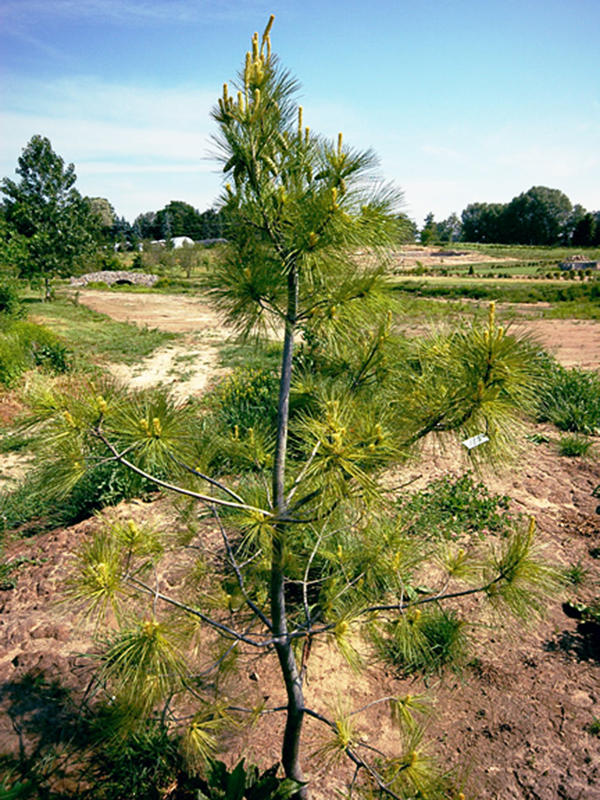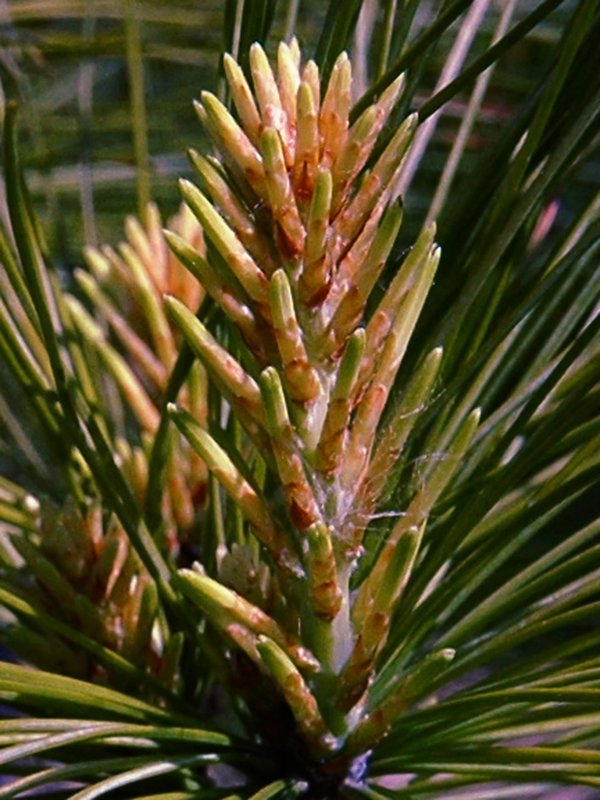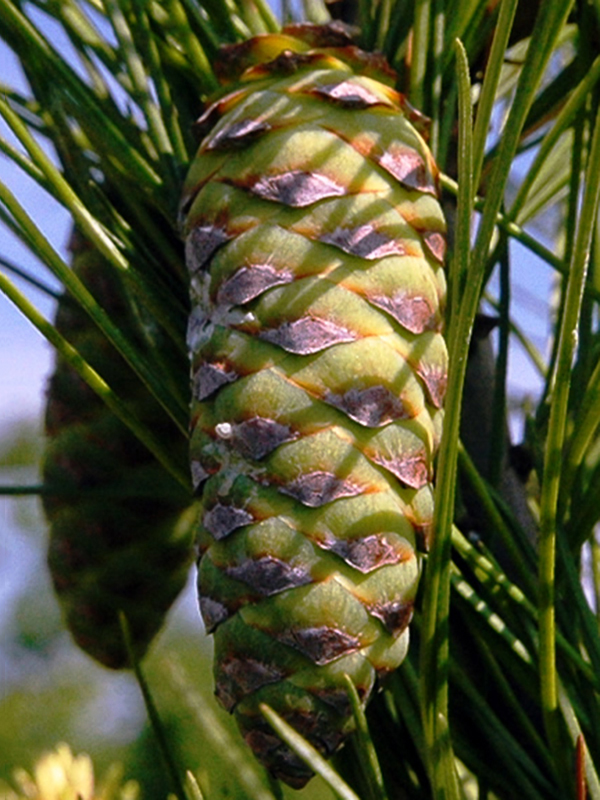| General Description | Pinus taeda is grown in acidic soils with a pH between 4 - 7 but has no preference to soil type. It requires full sun and is moderately drought tolerant. |
| ID Characteristic | When young the bark is black and scaly but with age the bark becomes brown with irregular scales. The needles are yellowish green to greyish green. They are slender, stiff and often twisted with parallel ventilation. |
| Shape | Pinus taeda is an upright pyramidal tree with a large full canopy of ascending limbs, trunk straight but often buttressed. |
| Landscape | Pinus taeda makes a poor hedge but can be used as a quick screen, specimen or shade tree. As it ages it will loose its lower limbs making it an excellent shade tree. Pinus taeda is a reclamation plant and can cause problems if it is to become invasive. |
| Propagation | It can be propagated by seed but moisture is critical for germination and seeds will require cold stratification but does not require any form of penetration. It can also be propagated by taking cuttings from a desirable host plant. |
| Cultivation | Pinus taeda has adapted to growing in a wide variety of growing conditions with a preference to acidic soils. For maximum growing potential it should be planted in a soil with a pH between 4 - 7 with full sun exposure and moderate moisture levels. It is moderately drought tolerant. It can also be easily transplanted. |
| Pests | Though they aren’t severe concerns Pinus taeda can develop a problem with pine bark beetle, pine tip moth, saw flies and heart rot. |
| Notable Specimens | Augusta National Golf Club, Augusta, Georgia, United States of America. |
| Habitat | Given its invasive nature Pinus taeda can be found widely scattered across forest, coastal plains and plateaus. Whether the existing plantation is pure or mixed it has the ability to replenish an area in a short time. |
| Bark/Stem Description | When young the bark is black and scaly but with age the bark becomes brown with irregular scales. The thickness of the bark is 5 cm. |
| Flower/Leaf Bud Description | The bud is oblong or conical. It is light brown to red in colour. The length of the bud is 65 mm. The apex is long and pointed. |
| Leaf Description | The needles are simple. The needles are yellowish green to greyish green. They are slender, stiff and often twisted with parallel ventilation. The needles are 23 cm long and are found in clusters of 2 - 3. |
| Flower Description | The flower is yellow. The male flower grows at the branch tip in large clusters. The female flower grows in clusters of one to three. |
| Fruit Description | The cone is conical, ovoid-cylindrical and often found in pairs. The scales are often thin, flattened or wrinkled, the seeds are 65 mm long. They are broadest above the middle and feel rough when handled. They can be lustrous. |
| Colour Description | The needles are a yellowish green to greyish green with no autumn colour change. The flower is yellow. The buds are a light brown to a red. The cone is brown to a greyish black. The seeds are dark brown with black spots. The bark is brown. |
| Texture Description | The texture is medium -coarse. |


